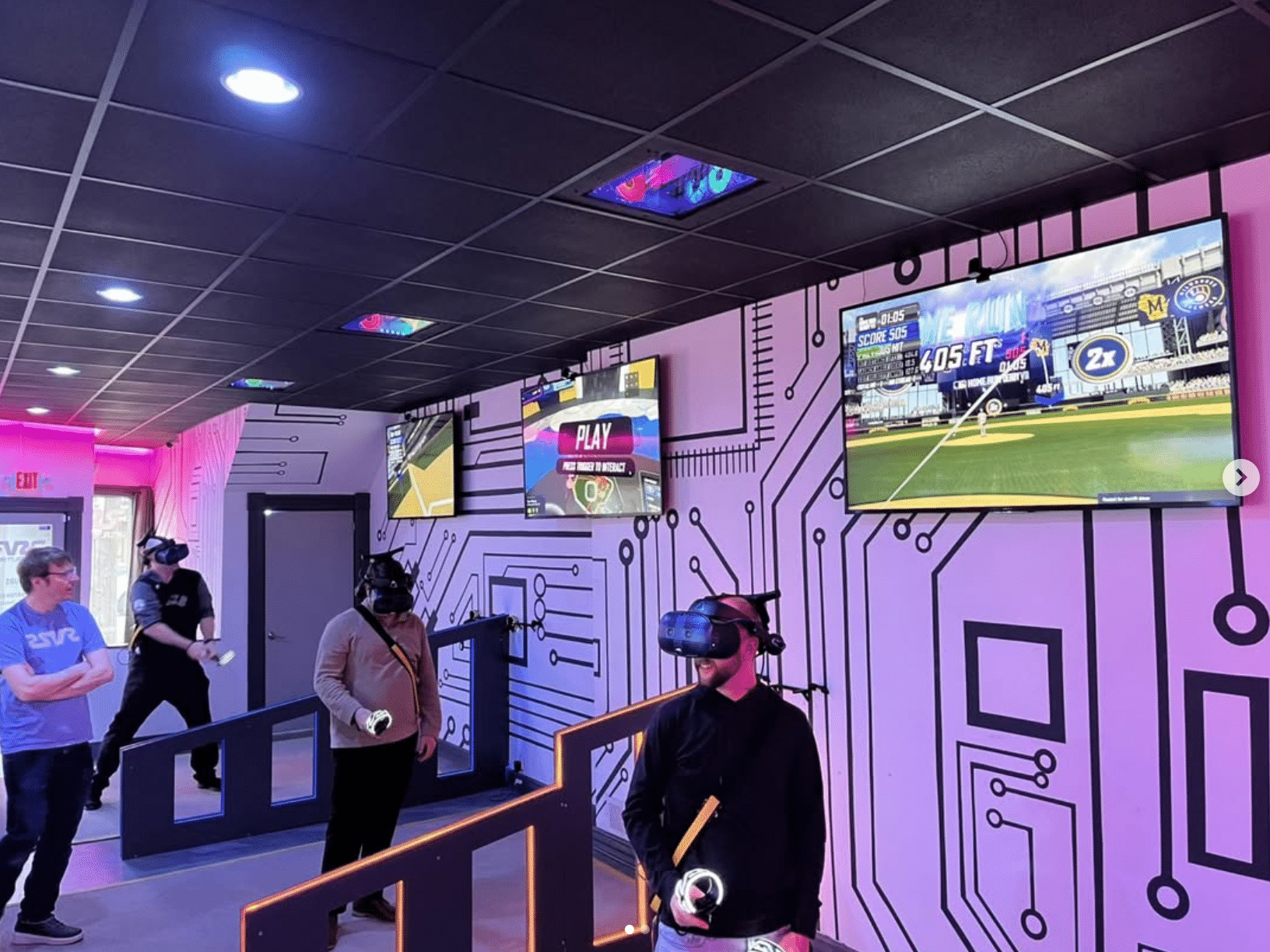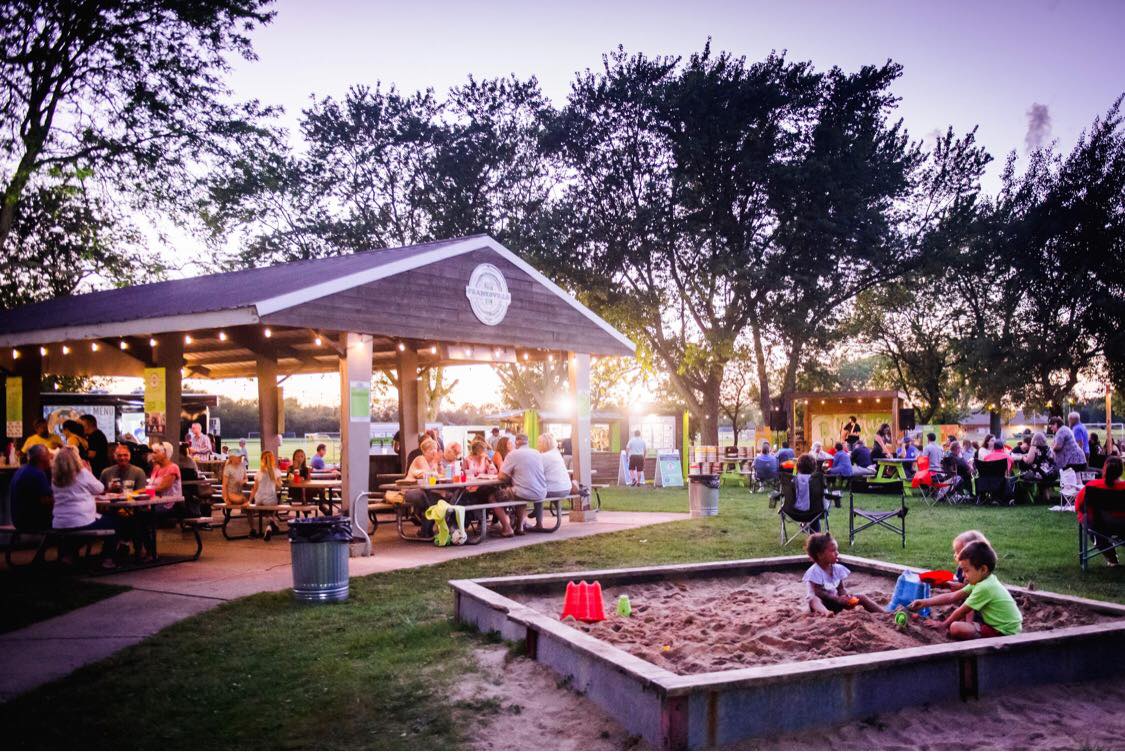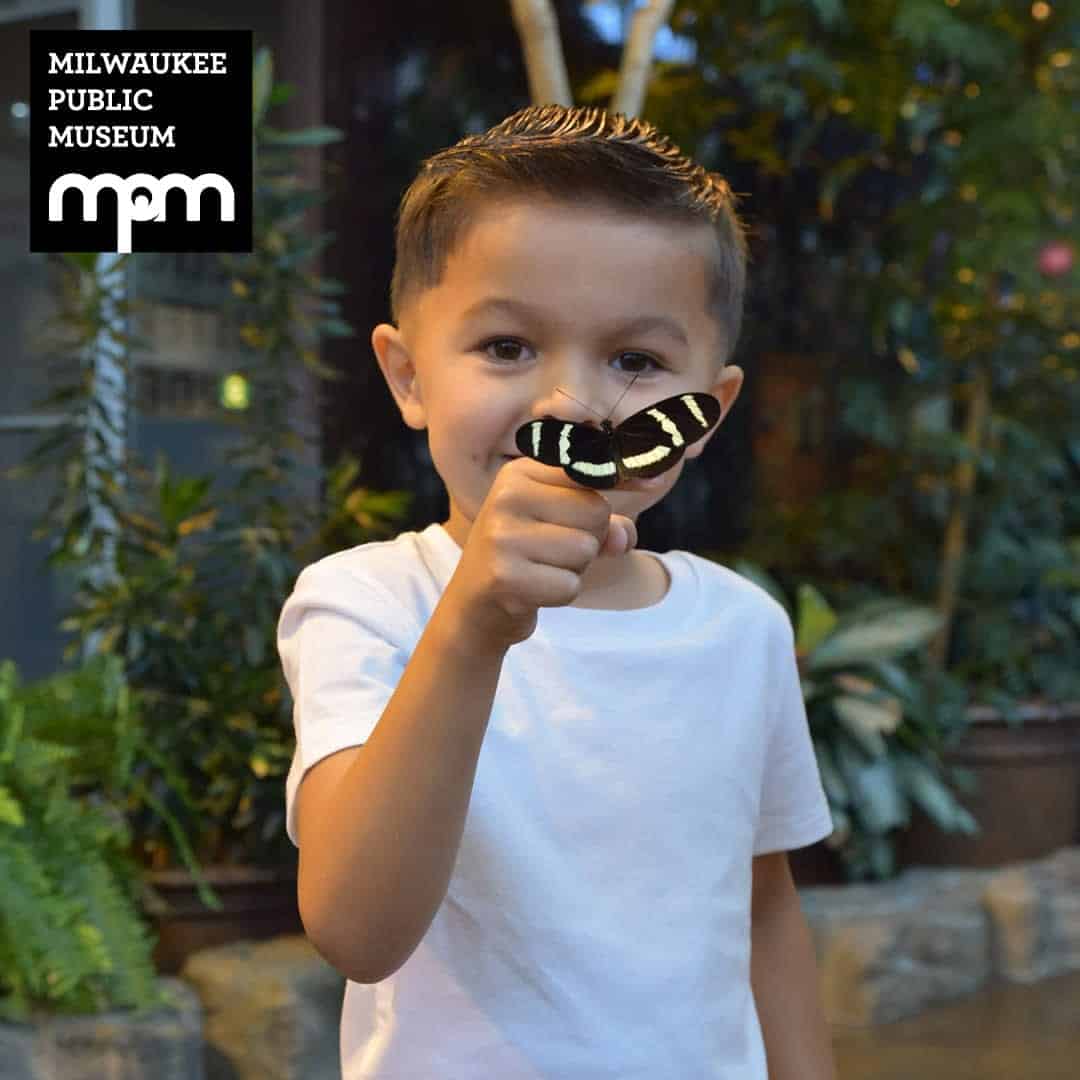Every kid is a natural scientist, and first grade is a great time to start diving deeper into the world of science.

Whether you’re looking to fill up your home library, or planning your first grade science curriculum, you’re in the right place.
For even more hands-on learning, check out our guide on 100 Easy Science Experiments for Kids to Do at Home—perfect for sparking curiosity and making science fun!
There are so many great books to help inspire a love of science, and we rounded up the best ones we could find.
Here are the essential first grade science books, all in one place:
Best Science Books for First Graders
1. All the Science You Need to Know Before Age 7
This colorful Usborne book explores plants and animals, magnets and mirrors through beautiful illustrations, hands-on experiments, and suggestions for curated websites and videos.
2. National Geographic: Little Kids First Big Book of Science
This lively introduction to the world of life science explores animals and plants, the world’s oceans, space sciences, earthquakes and volcanoes, sound and light, inventions and more.
It’s a fun reference book includes activities, games, and simple experiments that encourages learning new things in the early elementary years. Science topics include astronomy, botany, paleontology, zoology, and more.
The images are bright and the text is age-appropriate for a first grade level.
3. Ada Twist, Scientist (The Questioneers)
Ada Twist has big questions, and she’s asking them.
This beloved bestseller is inspired by real-life makers Ada Lovelace and Marie Curie. Through a charming cast of characters, it champions STEM, curiosity, the power of perserverence, and the importance of asking “Why?”
4. Pete the Cat, and the Supercool Science Fair
Pete and his friends have a blast at the school science fair, despite a few unexpected mishaps! Find out if their volcano is good enough to win first place. This 8×8 storybook includes dozens of stickers, and is perfect for the early reader.
5. Usborne Beginners Science
We always trust the quality of an Usborne book, and this Beginners Science Collection will not disappoint. It includes 10 books about real world science including Earthquakes & Tsunamis, Sun Moon and Stars, Living in Space, Storms and Hurricanes, Volcanoes, Astronomy, The Solar System, Your Body, Planet Earth, and Weather.
6. The Magic School Bus Inside the Human Body
Scholastic re-releaed the ten original Magic School Bus titles in paperback to celebrate their 20th anniversary.
In this classic, Arnold has swallowed the Magic School Bus. Instead of seeing an exhibit of the human body at a museum, the class is taking a look at Arnold’s stomach, his intestines, his bloodstream, and more from the inside on a truly mind-blowing field trip.
7. Ask a Scientist by Robert Winston
This fun and friendly science book for kids poses 100 real-life questions from kids to Robert Winston on every aspect of science.
8. My Encyclopedia of Very Important Things
This charming children’s encyclopedia gives your child fun facts and colorful illustrations about the world, animals, people, planets, earth science, and more! It’s geared towards kids ages 5-9.
They’ll learn about fiery volcanoes, our place in space, the changing seasons, mighty mammals and more.
It’s also beautifully padded and includes a built-in ribbon bookmark. It makes a great gift for any first grader!
9. The Boy Who Harnessed the Wind – Picture Book Edition
Based on the true story of fourteen-year-old William Kamkwamba from Malawi, who helped bring electricity to his village.
Without enough money for food, let alone school, William spent his days in the library learning science concepts that eventually helped him build a functioning windmill out of junkyard scraps.
This story will inspire your child as it shows how a great idea, strong problem-solving skills, and a lot of hard work can truly change the world.
10. How to Code a Sandcastle
This lively and funny book introduces kids to computer coding concepts.
Pearl uses coding concepts like sequences and loops to build the perfect sandcastle.
11. Ocean Animals for Kids
The Junior Scientists series is perfect for kids ages 6-9, and this book explores the world under the waves, mammals, birds, fish, and reptiles.
There are animal profiles, an introduction to marine science, and fun facts (like who has pink poop!).
12. National Geographic Little Kids First Big Book of Why
The Big Book of Why includes tons of photos, lively information, hands-on games, simple recipes, crafts and more.
It answers questions (What makes a car go? How does mushy dough become a crispy cookie? What does the doctor see in my throat?) in an age-age-appropriate and fun way.
13. My First Book of Planets: All About the Solar System for Kids
Explore the solar system with your first grader, from the bright and burning sun to the blue Earth to ice-capped Pluto and every planet in between.
This book includes eye-popping photos, fun facts about what makes each planet so special, and more.
14. Weird But True!
At last, all those weird but true facts that kids love so much are collected in this fun-tastic set of three compact, easy to handle and fun to browse books.
Wacky facts, fascinating information, and lively art combine to make these books irresistible brain candy for young readers. First graders will have so much fun with this book that they won’t even realize they’re learning.
15. Why? The Best Ever Question Book
Everyday childhood activities, such as an excursion to the park, splashing in the bathtub, or fixing a snack in the kitchen, can excite many questions in young children.
Why is the sky blue? Why does my stomach g-r-r-owl? Why do cows moo? Curious kids want to know about the physical world, and no adult has all the answers.
The tenth anniversary edition of Why? provides child-friendly explanations for nearly 100 of these everyday mysteries for a whole new generation of children. Why? takes young readers inside the kitchen and out to the park, from the farm to the supermarket, and from bathtime to bedtime.
Bright, playful illustrations by Scot Ritchie are the perfect complement, setting the scenes for the common questions that children ask.
16. What a Waste
In this informative book on recycling for children, your child will find everything they need to know about the environment. The good, the bad and the incredibly innovative. From pollution and litter to renewable energy and plastic recycling.
This educational book will increase your child’s understanding about how our actions affect planet Earth and the big impact we can make by the little things we do.
For example, did you know that every single plastic toothbrush ever made still exists? Or that there is a floating mass of trash larger than the USA drifting around the Pacific Ocean?
It is not all bad news though. While this is a knowledge book that explains where we are going wrong, What a Waste also shows what we are getting right!
Your child will learn about plans to save our seas, how countries are implementing green projects worldwide, and how to turn waste into something useful.
It is a lively kid’s educational book with illustrations and fun facts about the world broken into easy to digest bite-sized bits. Each page can be looked at in short bursts or longer reads for more detail, making it a great children’s book for a range of age groups.
17. The Book of Brilliant Bugs
Learn how Earth’s creepy crawly creatures contribute to life on the planet, where they live, what they eat, how their bodies work and what makes them so special.
Written by insect expert Jess French, this beautifully illustrated bug book for kids is especially targeted for ages 7-9.
Your child will take a journey through the forest floor, down into the deepest caves and even across the open ocean. They’ll learn therein bug groups from worms, snails, millipedes and centipedes, spiders and scorpions, woodlice, bees and even bugs that glow.
18. The Magic & Mystery of Trees
Learn about the amazing natural science of trees in this illustrated nature and science book for kids aged 7-9.
From the highest branch and leaf down to the complex “wood wide web” of roots, every part of a tree plays an important role in its own growth and the habitat of the whole forest or woodland.
The Magic & Mystery of Trees is a nature book that takes children on a journey of exploration, showing them just how special these mighty organisms are.
Did you know that trees can communicate with each other and warn each other predators? Or that they can record the past, and anticipate the future to ensure their survival?
This nature book is for kids to discover exactly how trees nurture their networks, and explore extraordinary trees from all around the world.
It also includes fun practical activities such as planting your own tree and measuring a tree’s age.
19. Humongous Fungus
Embark on a magical tour of the forest floor and discover one of the most fascinating living organisms on this planet – fungi!
Not quite animals and not quite plants, the mysterious kingdom of fungi is full of secrets.
Your child will discover how fungi are important for the ecosystem, how they provide food for plants and animals, how they can make medicine for humans, how they can destroy crops, and more.
It includes gross-out stories of fungal infections that kids will love, incredible facts about “bananageddon”, crop disease, epidemics, and zombified ants.
20. Forces: Physical Science for Kids
What keeps us stuck on the ground? What makes magnets come together? What makes one team win during a game of tug of war? Forces!
Our world operates the way it does because of forces. Gravity, magnetism, pulling and pushing forces, and friction are some of the many forces that affect the way we move on Earth.
In Forces: Physical Science for Kids, kids ages 5 to 8 are encouraged to observe and consider the different forces they encounter on a daily basis.
By recognizing this basic physics concept and identifying the different ways it is demonstrated in real life, kids develop a fundamental understanding of physical science and are impressed with the idea that science is a constant part of our lives and not limited to classrooms and laboratories.
Simple vocabulary, detailed illustrations, easy science experiments, and a glossary all support exciting learning for kids ages 5 to 8.
This book is perfect for beginner readers or as a read aloud nonfiction picture book.
21. Drop: An Adventure Through the Water
Meet Drop. She’s water! And she’s seen a thing or two–even dinosaurs.
Everywhere Drop flows–and she flows everywhere–she makes life on Earth possible, and has a great time doing it.
Have you ever plummeted from a rain cloud? Or taken a thousand-year nap in a glacier? Drop has! She’ll tell you all about it.
With delightful panache and a steady stream of funny one-liners, Drop takes readers on an adventure through the water cycle and beyond.
Filled with irresistible artwork, funny asides, and a steady sprinkle of kid-enticing facts, Drop is the story about water everyone has been thirsting for.
22. Everyone Poops
Taro Gomi’s classic, go-to picture book for straight-talk on all things “number 2” is a matter-of-fact, educational guide and a hilarious romp through poop territory.
The concept of going to the bathroom is made concrete through this illustrated narrative that is both verbally and visually engaging.
23. Awesome Science Experiments for Kids
As kids grow older, they become more curious about the world around them, often asking, “How does this work?”
Awesome Science Experiments for Kids teaches young brains the nuts and bolts of the scientific method using fun, hands-on activities and experiments designed to show kids how to hypothesize, experiment, and then record their findings.
With hands-on projects like a Fizzy Rocket, Magnet-Powered Car, and Pencil Sundial, kids will have a blast learning to build, design, and think critically―while getting inspired to interact with the world around them and make their own discoveries.
Awesome Science Experiments for Kids includes 100+ STEAM experiments, easy-to-follow instructions, and colorful photos.
From learning how quicksand works to turning a lemon into a battery, these experiments teach budding STEAM kids that it’s cool to be curious. Many of the experiments use common household materials that you probably already have on hand.
24. Luna Muna
Meet Luna Muna.
Luna Muna is a curious young girl who loves outer space. In fact, she’s going to be an astronaut one day! One night, after wishing on a shooting star, Luna Muna discovers a secret power: when she wears her special sparkly space helmet, she can float just like the astronauts in space!
After bedtime, Luna Muna blasts off on a wild adventure and discovers that while space is very exciting, her home on Earth is pretty special too.
25. National Geographic First Big Book of Animals
The National Geographic Little Kids First Big Book of Animals is an adorable animal reference filled with fluffy and scaly creatures big and small.
This appealing book introduces the youngest explorers to the world of wildlife, using a child-friendly format.
It devotes four pages each to 32 high-interest creatures, including dolphins, tigers, butterflies, frogs, penguins, wolves, and pandas.
Child-friendly text explains how animal parents take care of their young, how baby animals change as they grow, and how they learn to hunt and eat.
Related Content:
- Looking for More Science Fun?
- Easy Science Experiments for Kids to Do at Home: Explore a collection of simple and engaging experiments perfect for kids of all ages.
- Science Trivia Questions for Kids: Challenge your knowledge with these fun science trivia questions that are perfect for family game nights or classroom activities.
- Cold Weather Science Experiments: Discover the magic of science even in chilly weather with these cool, hands-on activities.
- 4th Grade Science Experiments: Take science learning to the next level with these exciting projects designed specifically for fourth graders.
Calie Herbst, Editor-in-Chief of Milwaukee With Kids, has spent over a decade combining her experiences as a parent of three to create a hub for Milwaukee’s family adventures.
Her decade-long teaching career in Milwaukee Public Schools and academic background, including a Master’s in Teaching from Marquette University and dual B.A.s in Sociology and Spanish from the University of Wisconsin – Madison, fuel her passion for inclusive and engaging family content.
Calie is also a recognized voice in local media, contributing to WISN Channel 12 News, WTMJ Wisconsin Morning News, Fox 6’s Real Milwaukee, and B93.3.
Discover more about Calie’s journey and editorial approach on her About Page and Editorial Policy Page.









